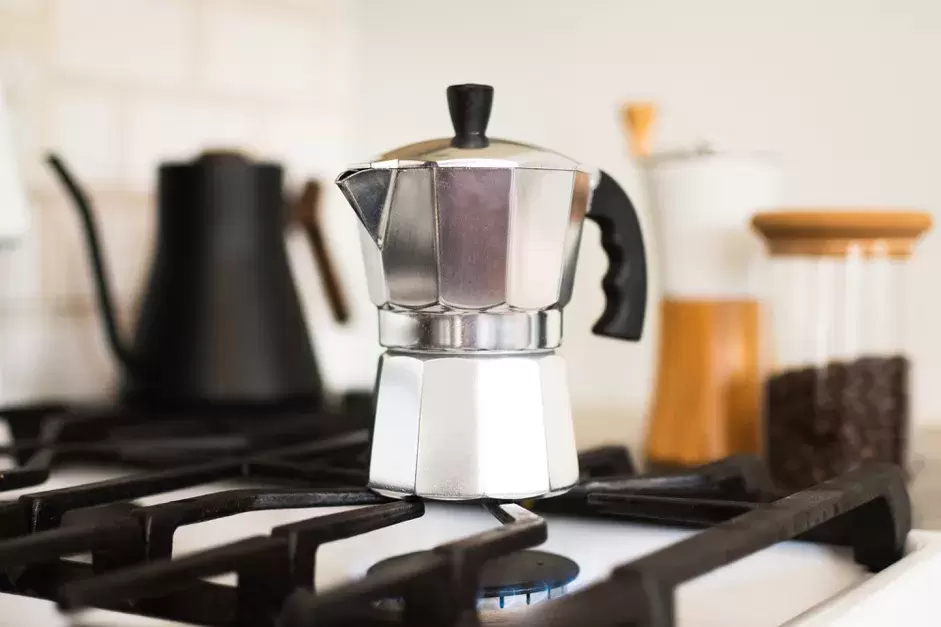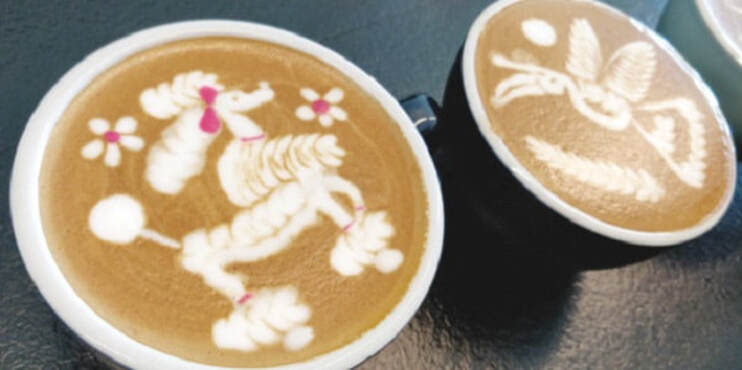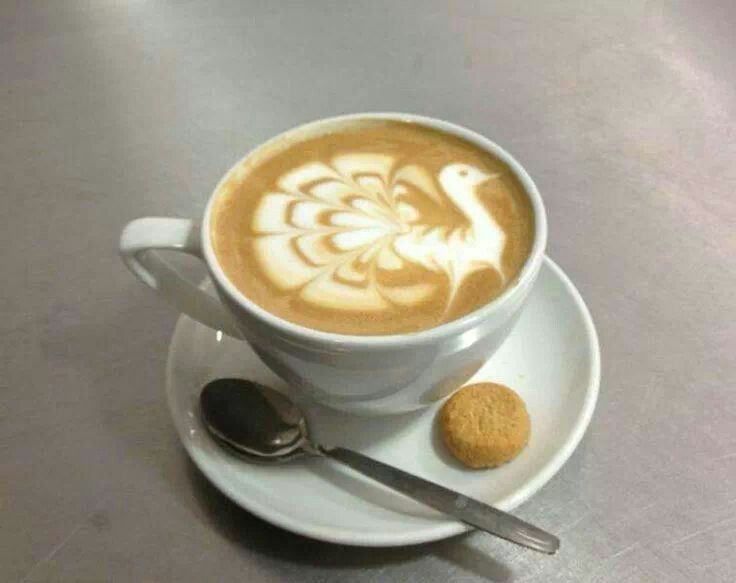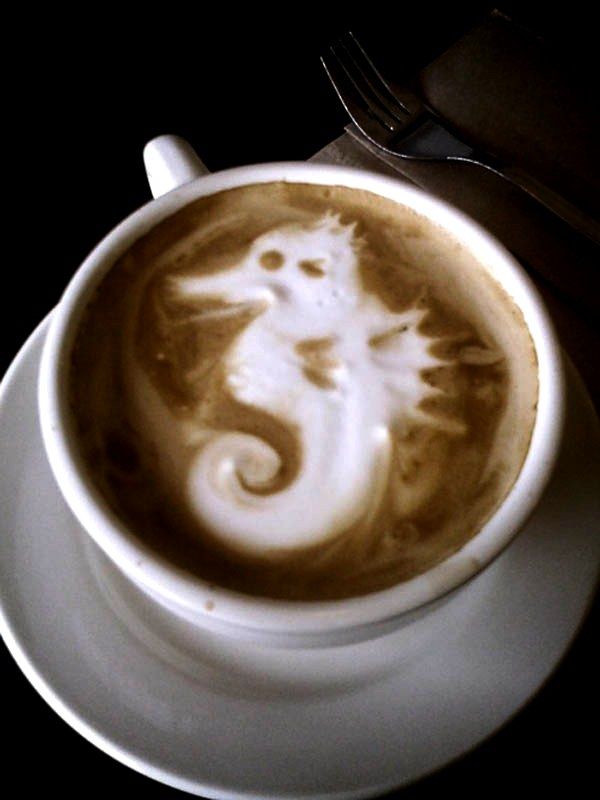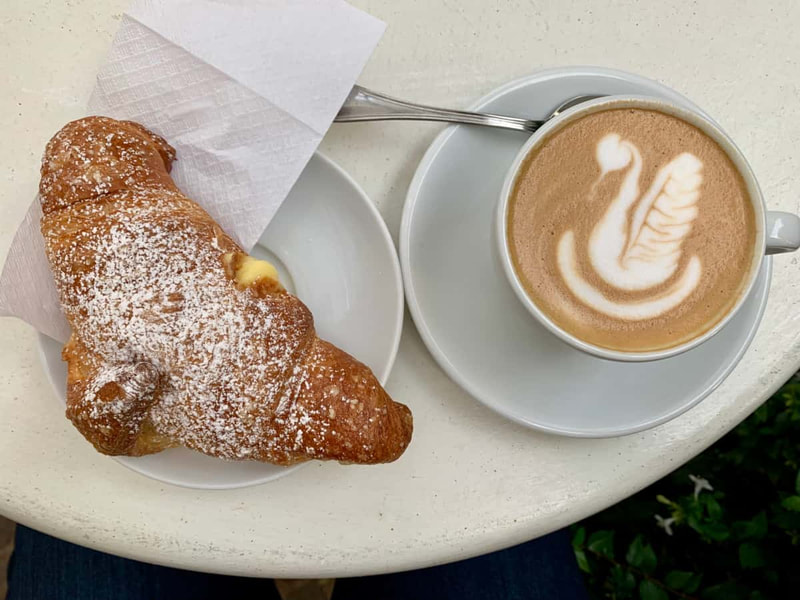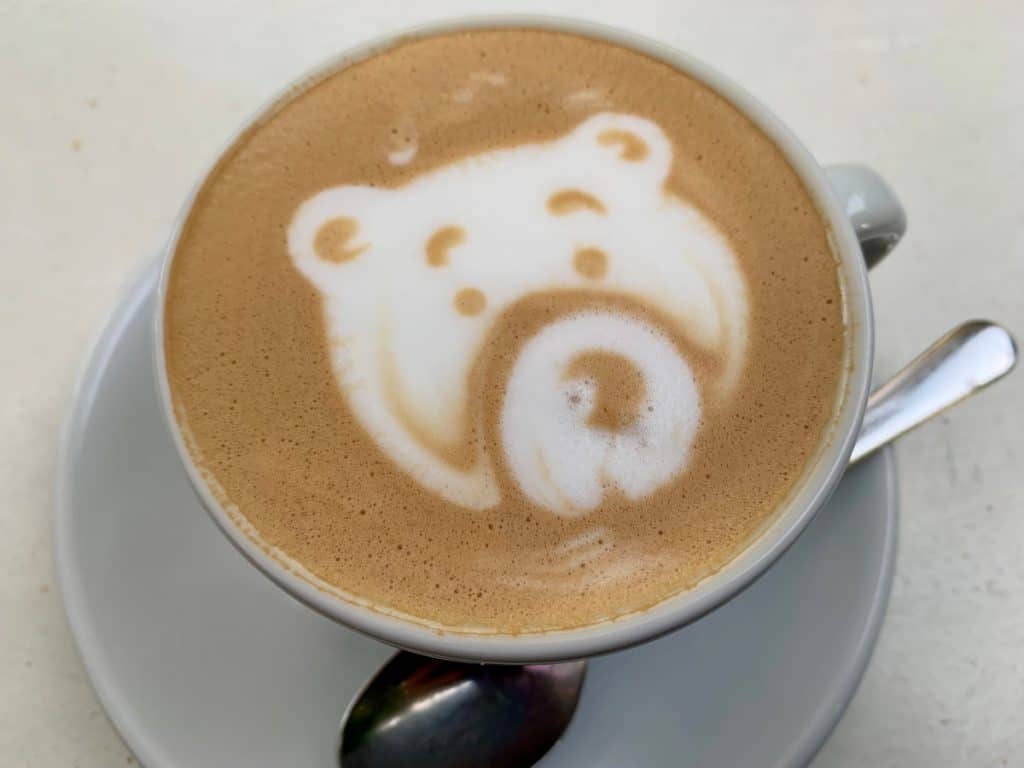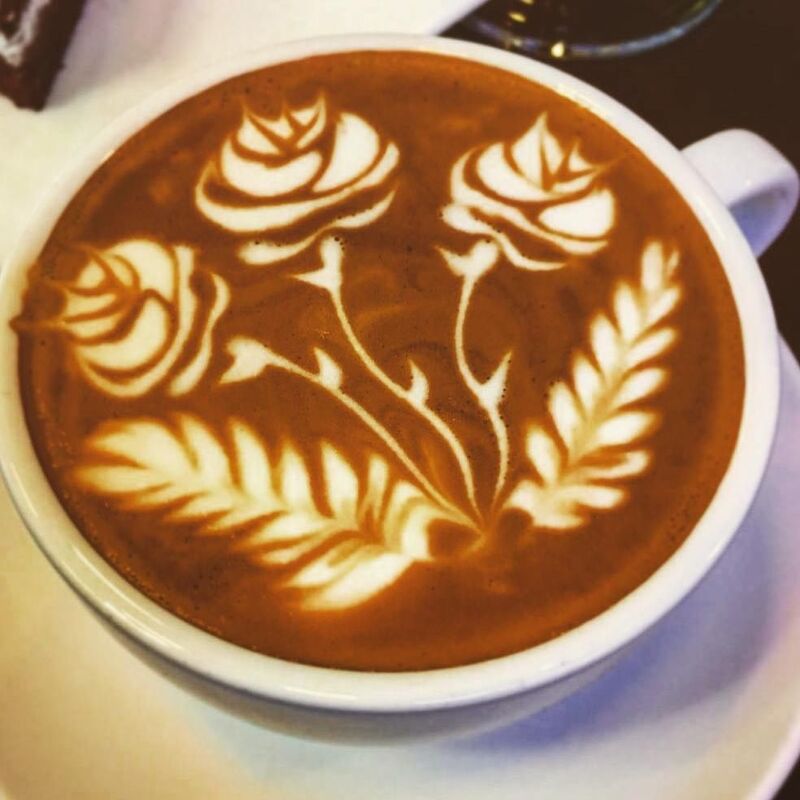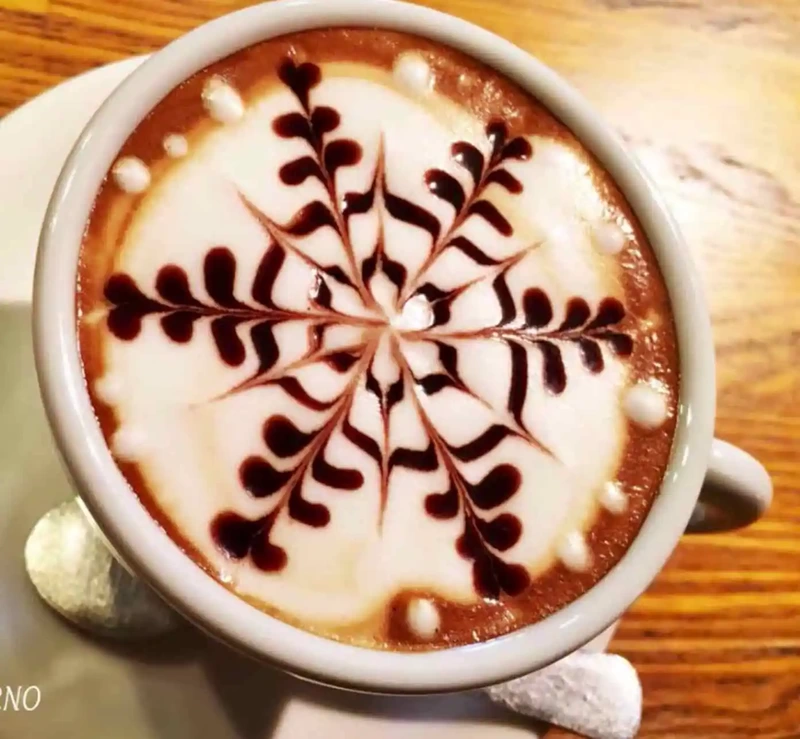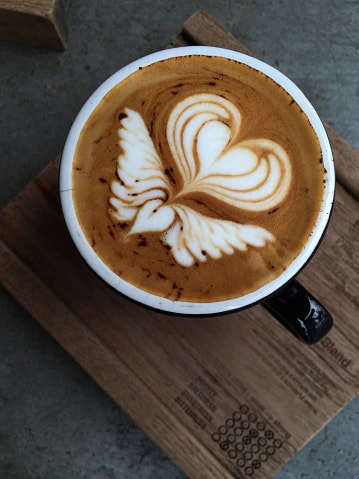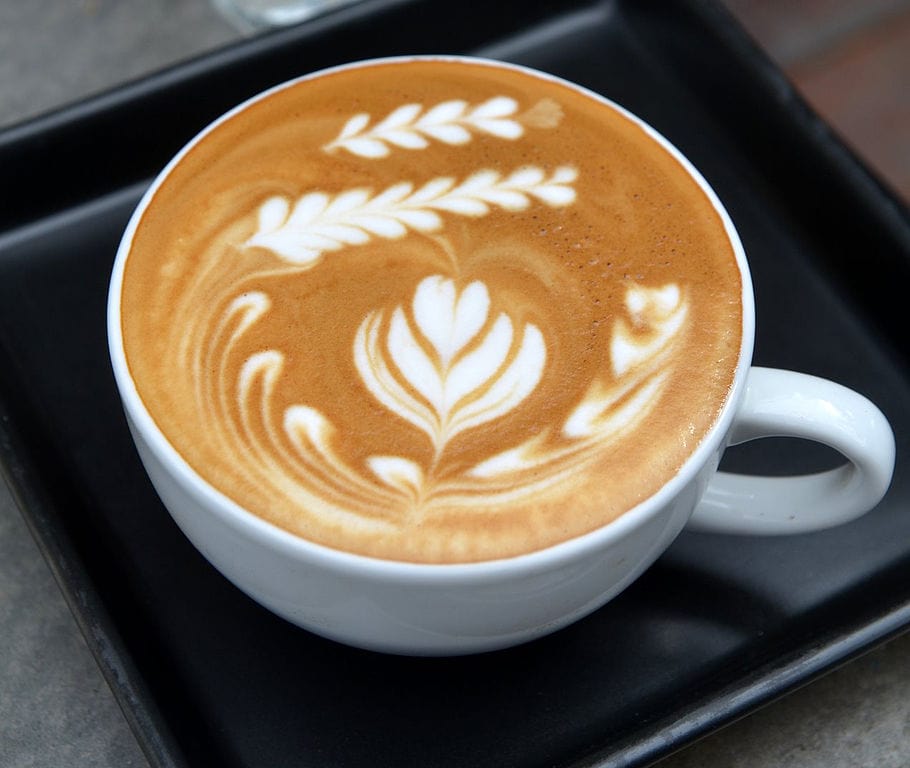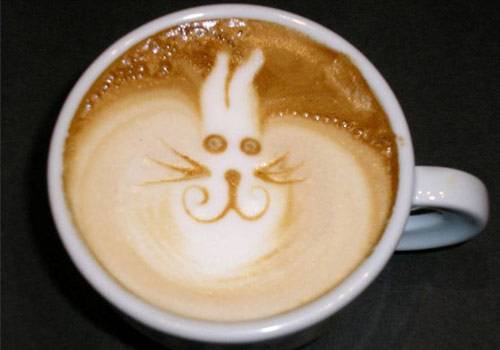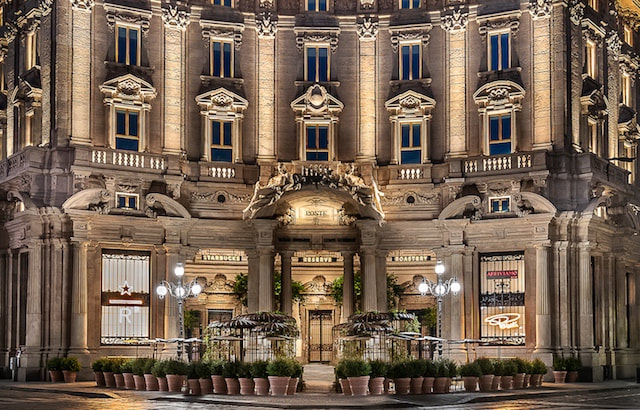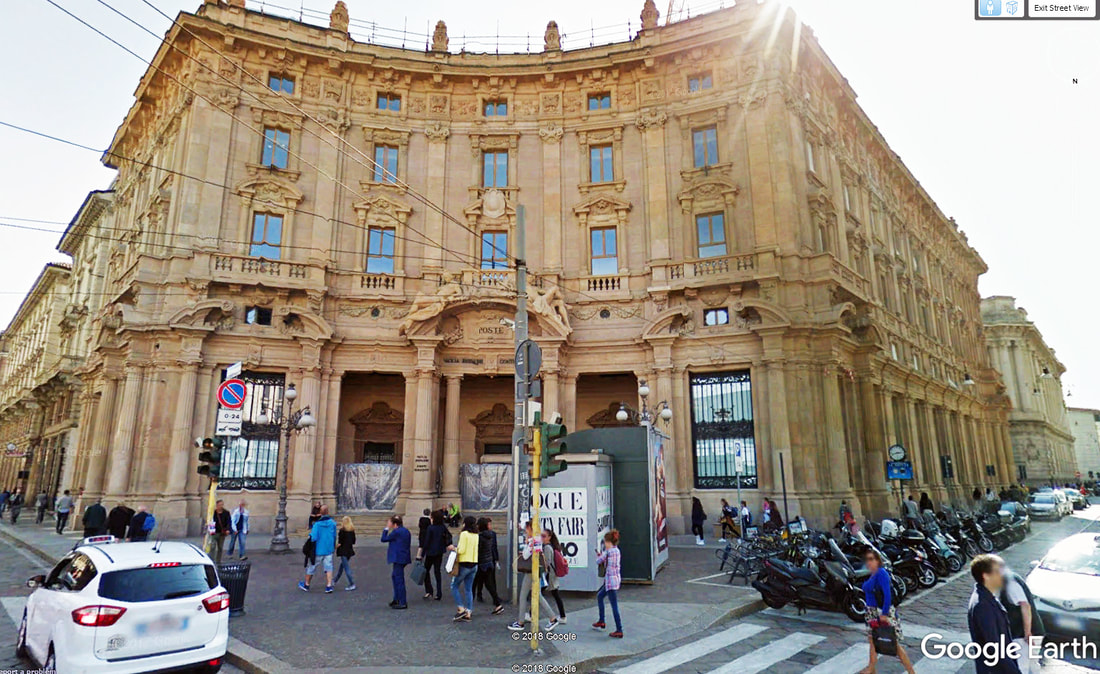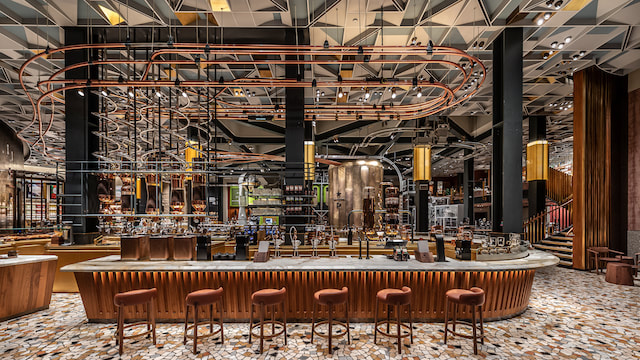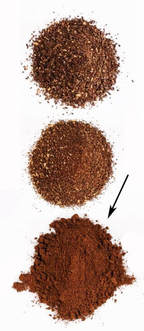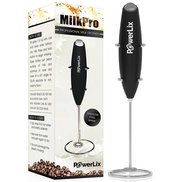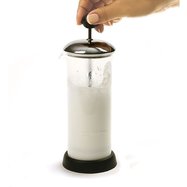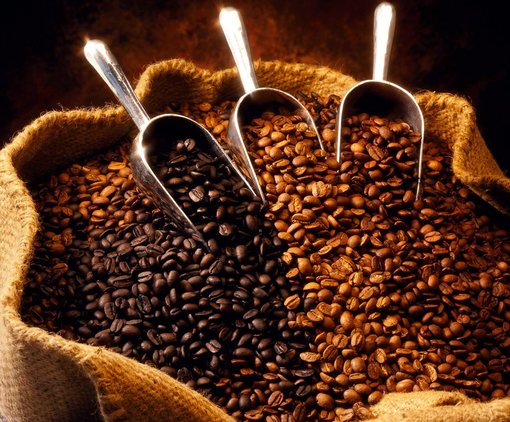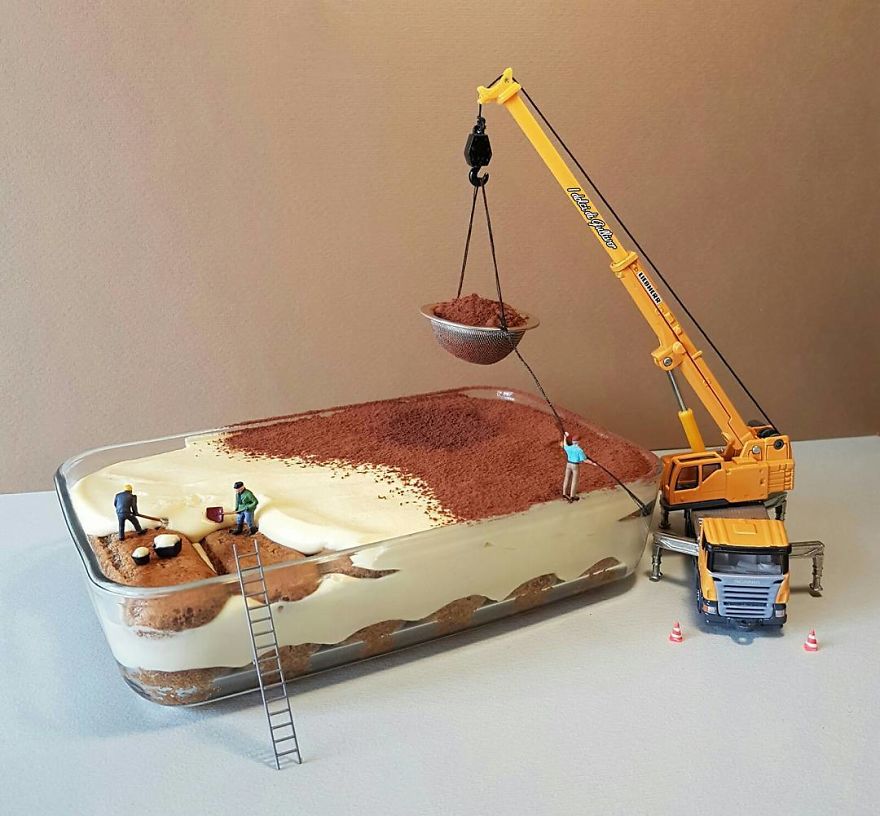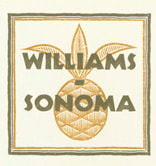|
...you throw away your counter-space hogging coffee machine, and now only make your brew in your little silver Moka pot.
 Italians have either invented, discovered or perfected many things that have spread worldwide: pasta, pizza, tomatoes, motor scooters and of course, coffee. In this case, although latte art became widespread in American coffee shops in the 1980s, it was the Italians who first created either artistic imagery or custom writing using micro-foamed milk on top of their brews. There are now latte artist-baristi all over the world, from Italy to America to Scandanavia and even in the Orient. Some of the best compete in world competitions. Here are a few examples. on AMAZON If you'd like to try your hand at this fun craft, check out these Youtube videos... Ciao! --Jerry Finzi Calling all Milanese! Attenzione a tutti i Milanesi! The new Starbucks is opening today on Piazza Curdusio in Milano! The location is in the old post office... Please... visit the store, order one of their "coffees" and perhaps shoot a video of your visit and post it here on GVI... Tell us what you think about the "Starbucks Experience". Take photos of their menu and prices--and their giant sized offerings. Are the high prices (and high sugar & fat content) really worth a few couches and free WiFi?
GVI wants to know, and will include your impressions in an upcoming article. Let's really take a look to see if Italians really want Starbucks in the land of Moka pots and espresso. You can contact us here, or send us email via our Grand Voyage Italy Facebook page. --GVI For further reading: Will Starbucks Make it in Italy, Home of the Quick, Tiny Espresso Shot? 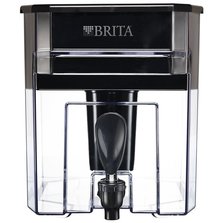 Water The basic thing you need for a great espresso is great water. If your water is suspect--tasting too slimy, has an odor, or is off-putting in any way--in the least, use bottled mineral water or get yourself a Brita filter. As a basic test, if you love the refreshing taste of your tap water on a hot summer's day, then your water should be good to go. 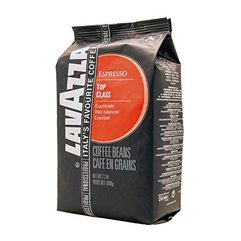 The Beans There is absolutely no difference between a bean labeled as "espresso" or not. Selecting which coffee bean to use for espresso is a personal choice--which means that a world of different tastes are there for the tasting. Espresso is a method of brewing coffee. There are really only two species of coffee beans grown with many varietals (sub-species), and every type is capable of being brewed in different styles--peculator, French drip, espresso, etc. Remember that beans are roasted before you buy them. Roasters nowadays tend to produce a darker roast to produce more smoky, caramelized sugary flavors--as seen in "Italian roasts"--but a very dark roasted bean can mask the more subtle differences in bean types. Roasters are experimenting with lighter roasts which can enhance the flavor of the coffee's complexity. Lesson to learn--experiment with both dark and lighter roasts and have fun discovering flavor profiles that you enjoy. Coffee preference is like selecting a wine... One person's Primativo can be as satisfying as another's Brunello.
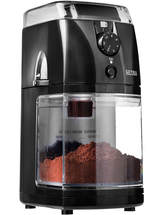 Grinder Beans should be ground using a burr type of grinder (as opposed to a blade type) that can grind finely with many steps of adjustment. Read reviews carefully as some grinder models don't grind fine enough for espresso. (The affordable Secura burr grinder shown is what we use). 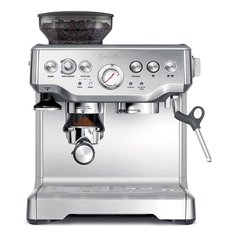 Espresso Machines The best espresso machines should have solid components, create consistent temperatures, are easy to clean, with an easy to understand interface--which is a real task on some of the more complex models. The larger machines come with a built-in grinder to grind exactly the correct amount of beans automatically, a one or two-spouted portafilter with removable basket inserts for either a single or double shot, a self-storing tamper, a milk steamer/foamer, and an espresso cup heater on top. In our opinion, these are for coffee aficionados that like to turn coffee-making into a theatrical event and if you are prone to buying complex kitchen appliances and then find you use them only once or twice due to their complexities, stay away from these machines. They take dedication and perseverance to master and can be difficult to keep clean. They are also power hogs: from 900-1500 watts, which means you should not be using them on the same circuit as your toaster or microwave. There are simpler--and quicker--ways to make espresso, cappuccino and other coffee beverages. 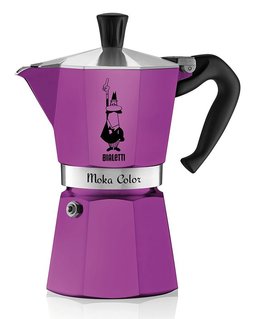 Moka Pot Bialetti made the first stovetop espresso maker back in 1933, and are still using the exact same patented moka pot design. In fact, there are many other companies who have copied their iconic design. There have been over 200 million Moka pots sold since the 1950s, mostly in Italy--60 million Italians can't be wrong. A Moka pot can be found in virtually every Italian households but are gaining popularity all over the world in the last decade or so. The Moka also comes in many different sizes... a tiny one for a single morning espresso shot, or a large one to satisfy a large gathering. It is composed of roughly three components: the base with a pressure valve which holds the water; the basket which holds the coffee; and the "collecting chamber" which the coffee brews into. In between the top and bottom halves are a metal filter and the "O" ring which ensures a pressure seal and to filter the coffee grinds from the coffee produced. The Moka pot boils the water which is forced up through the coffee "puck" and then into the top chamber, creating a foamy crema (head) along with the coffee. The whole process from heating the water to drinking the coffee is about 5-10 minutes, depending on the capacity of your Moka pot.
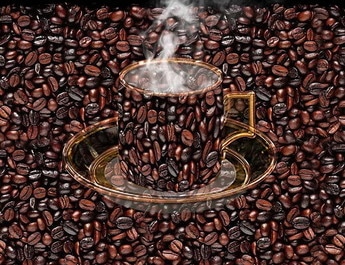 In the centuries before the iconic Bialetti Moka pot, people drank the new beverage in coffeehouses, an idea that started in Constantinople around 1550, but also spread to Mecca, Damascus and Cairo. Although David ibn Abi Zimra (a Cairo rabbi) ruled in 1553 that Jews could drink coffee prepared by a non-Jew, he also warned against patronizing public coffeehouses and suggested that instead, they have their coffee deliver to their homes--especially due to its medicinal use. Initially, in the 15th century, the drink quickly spread throughout the Ottoman Empire, enjoyed with large amounts of sugar. Jews and Muslims alike found that it helped them stay awake and alert for nightly prayer services. For Muslims, it took the place of forbidden alcoholic beverages. For the Jews, its adoption was tentative with rabbis debating whether it was Kosher, what blessing it required or whether it was actually a medicinal drug. Coffee in Italy had a slow start, partly due to it being declared a Drink of the Devil and outlawed by the Catholic church, and later, because it was a very expensive drink for the elite. The Church considered it as being "the bitter invention of Satan", and also bemoaned of its links to Islam. It wouldn't be until 1603 when Pope Clement VIII tasted--and liked--coffee and gave the drink full absolution from its sins. This helped open the floodgates for coffee in Italy and the rest of Europe. In 1632, the Jews of Livorno--a port city that was given over to the Italian Jewish population which became a center of Mediterranean trade--imported the first coffee into Italy and then opened the first coffeehouses (Bottega del Caffè). By 1624 and 1650, large shipments were shipped to Venice and by 1683, the first coffeehouse in Venice opened. In researching this article, I actually discovered that in 1766, an ancestor with my family name, Beniamino Finzi (an Italian Jew) was given management of a coffeehouse in Livorno. He managed to get the Jewish leaders to rescind a law forbidding games of chance in coffeehouses frequented by Jews. He was the first Jew to be granted a permit to allow gambling with card and board games in a coffeehouse. From this time on, a Jew could only run an "entertainment room" for gambling only if they also served coffee! Coffee was becoming mainstream.... within 200 years of the first sip being tasted in Italy, the craving for coffee had spread throughout Europe and even into the New World. --Jerry Finzi |
Archives
May 2024
Categories
All
|

